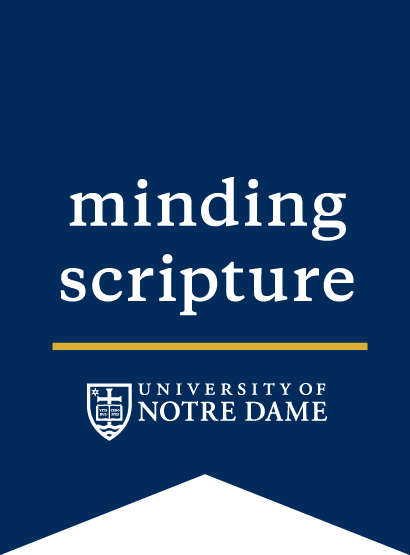Show Notes
Join our hosts Gabriel Reynolds, Mun’im Sirry, Francesca Murphy, and Tzvi Novick for this episode as they discuss how the Qur’an portrays lust and the opposing virtue of chastity. How does the Qur’an characterize human sexuality, and what are the practices or dispositions that it recommends in order to avoid indecency? How do these compare with descriptions contained within the Bible?
First, our hosts explore whether sexuality as a whole is viewed positively or negatively within the Qur’an. According to Professor Sirry, nothing in the Qur’an associates sex with evil; instead, “The Qur’an recognizes the sexual need of human beings, and does not recommend that the natural instinct be oppressed, but nourished.” Therefore, the fulfillment, rather than suppression, of human sexuality through marriage is at the heart of the Qur’an’s teachings. In this vein, marriage is lauded in the hadith as “half of religion,” and having a spouse serves as a source of comfort, peace, and enjoyment. In both the Bible and the Qur’an, marriage is the proper context for the expression of sexual desire.
However, there may be tension between these Qur’anic recommendations towards marriage and the Christian view of celibate monastic life as a vocation. Verses in the Qur’an and Hadith indicate awareness that some Christians live a celibate monastic life and seem to explicitly reject this path. In Judaism, especially within the Babylonian Talmud, there is found a similar resistance to monastic life.
Furthermore, while the Qur’an seems to take a positive view of marriage, questions can be raised regarding its depiction of sexual desire, that is, the shahawat, or yearning, of the human person. The Bible is also concerned with this question, and descriptions of “clinging” and “yearning,” which seem to be both innate and a punishment for sin, complicate the biblical narrative. According to both Islamic and Jewish traditions, adulterous behavior is punishable by death, and behavior that might lead to adultery is also discouraged, such as nudity and mixing of the sexes.
In addition, there is some evidence to suggest that while the Qur’an unequivocally proclaims the goodness of marriage, there is a sense that sexual desire is not appropriate in certain contexts. For instance, during the hajj, or pilgrimage, sexual activity is not permitted even between married couples. Similarly, while Judaism lacks an institution of monasticism, the tradition of light of the theophany at Sinai, or the coming of the presence of God, indicates that men and women are supposed to separate for three days. How does this seeming disapprobation of sexual desire affect the shared scriptural tradition of the positive value of sex and marriage?
Finally, our hosts unfold the Qur’an’s description of chastity and encouragement of chaste behavior among both men and women. While the Bible does not contain the same detailed exhortations about clothing or physical gestures, similar themes are emphasized, revealing that sexuality, marriage, and chastity are crucially linked in Islamic, Jewish, and Christian traditions.
Further Reading
- Prudence Allen. The Concept of Woman, Volume 1: the Aristotelian Revolution, 750 B.C. – A.D. 1250 (Volume 1). Grand Rapids, MI: Wm. B. Eerdmans Publishing Co, 1997.
- Kecia Ali. Sexual Ethics And Islam: Feminist Reflections on Qur’an, Hadith, and Jurisprudence (London: Oneworld Publications, 2006).
- Margaret Farley. Just Love: A Framework for Christian Sexual Ethics. New York: Continuum, 2008.
IMAGE CREDIT: Image courtesy of Pxhere Creative Commons
